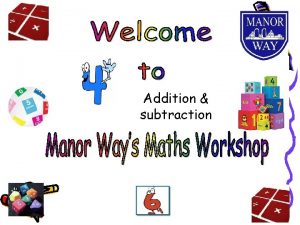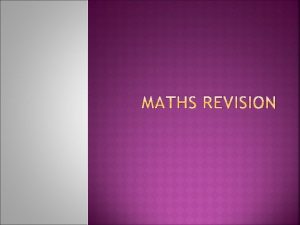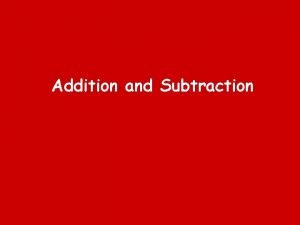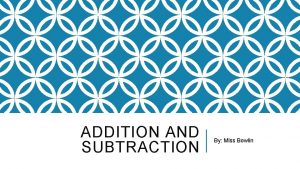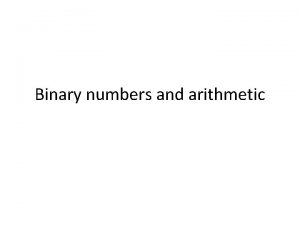Language of Addition Altogether Count on More And







- Slides: 7

Language of Addition • • • Altogether Count on More And Increase by Join • • • Add Combine Plus Total Sum of

Remember… mental maths should be completed without written working. Mental Addition Number Bonds/Families Partitioning e. g 60+40 (so 6+4=10 therefore 60+40=100) Double/Near Doubles e. g. 45+46 (double 45=90 then add 1) Strategies Tens/Units Separate e. g. 32+25 32+20=52 add 5 units =57 89+9 (+1) (-1) 90+8 32+25 30 2 20 5 50 7 57 Compensating e. g. Tens + Tens Units + Units Keep the big number in your head and count on

T U 2 0 + 1 3 _____ Written Addition Calculations These are called vertical calculations Start here • Digits should be lined up in the correct column • Always start by adding units (if a whole number), or the number furthest to the right when using decimals. • If a number needs to be carried it goes under the line of the next column. • Keep on adding until the vertical addition is complete. 364 + 879 _1 2 4 3 11 + 879 __ 2 4 3 111 1. 79 + 3. 6 4 ____ 466 + 326 _____ 2 1

Common Mistakes • Putting numbers in the wrong column • Putting the decimal point in the wrong place • Forgetting to write the number they have carried • Forgetting to add the number that has been carried • Putting the number carried into the wrong column • Counting on from the wrong number 5+3 1 2 3 4 5 6 7 8

Adding Fractions 1. Find the lowest common denominator 2. Convert fractions into equivalent fractions 3. If there are whole numbers, add them first before adding the fractions 4. Only add the numerator (number on top). 5. If you have made improper fraction divide the top number by the bottom number to make a mixed number 6. If there are still 2 whole numbers, add them together. 7. REMEMBER TO SIMPLIFY!! and SHOW YOUR WORKING Common Errors • • Choosing wrong denominator Adding the denominator Forgetting to simplify Forgetting to add whole numbers

Adding Fractions Hard 32 + 3 76 9 45 9 + 5 9 7 11 9 7+12 9 82 9 Medium Easy 3 + 4 4 5 1 + 1 4 8 15 + 16 20 20 31 20 1 11 20 2 + 1 8 8 3 8

Adding Negative Numbers -5 -4 -3 -2 -1 0 • Extension • When working with negative numbers, encourage children to think of a thermometer 10 + (-3) = 7 Medium 4 + (-6) = -2 2 3 4 5 Children should have a secure understanding of previous work • When you add a negative you treat it as a subtraction Easy 1 -24 + (-16) Hard -6 + (-5) = -11 => Remember to move away from ‘ 0’ 24 + 16 -40 254 -254 + (-132) + 132 -386 When working with bigger negative number treat as an addition, adding the negative at the end.








